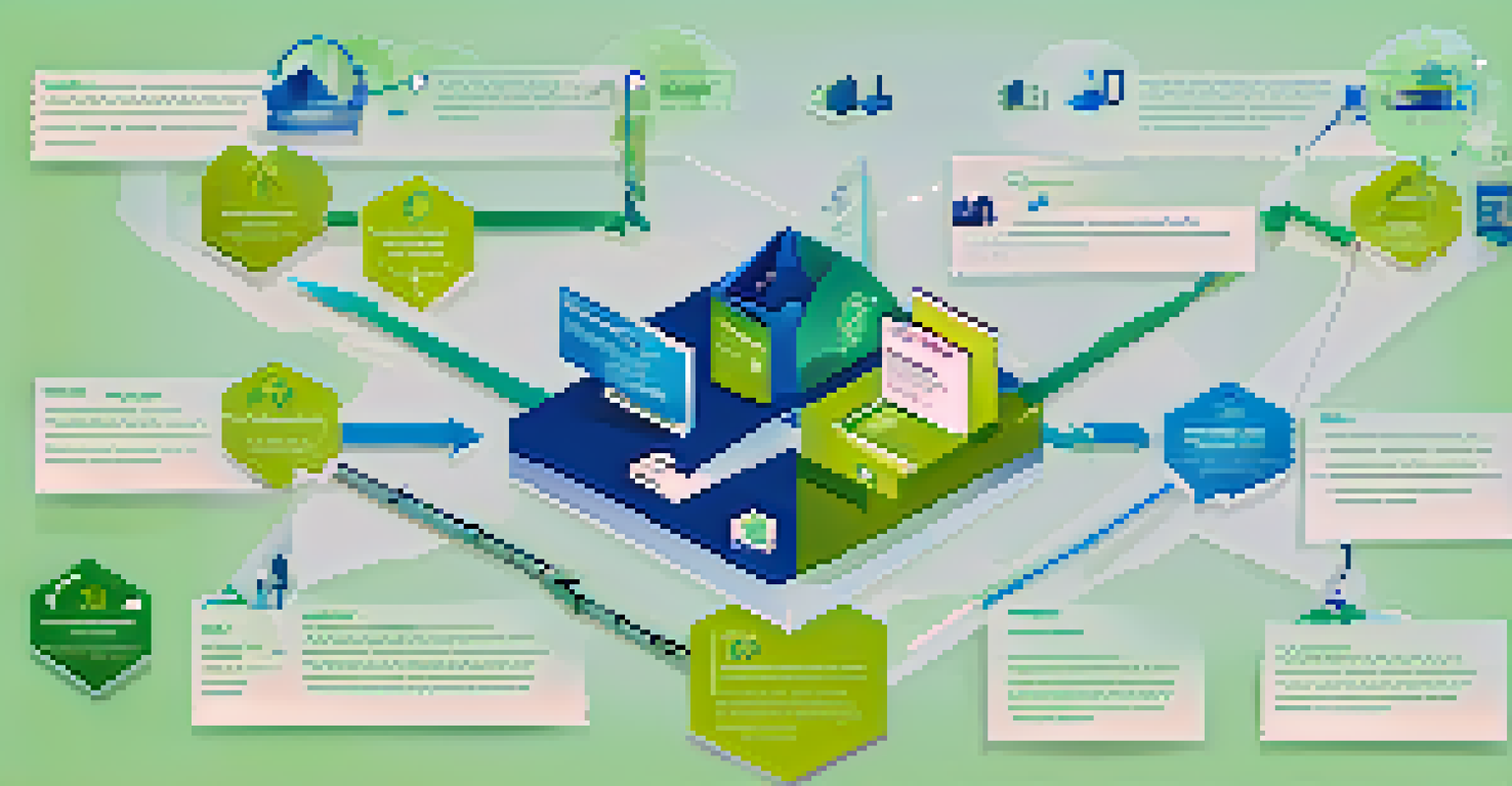Blockchain for Nonprofits: Enhancing Transparency and Trust

Understanding Blockchain: A Quick Overview
Blockchain is a decentralized digital ledger that records transactions across many computers. This technology ensures that once data is recorded, it cannot be altered without the consensus of the network. Think of it as a highly secure, transparent notebook that multiple people can access but no one can erase.
Blockchain is the tech. Bitcoin is merely the consequence.
In a blockchain, every transaction is secured using cryptographic techniques, making it nearly impossible for anyone to tamper with the data. This level of security makes blockchain particularly appealing for nonprofits that need to maintain records of donations and expenditures transparently. Imagine a community pot where everyone can see who contributed and how the funds are spent.
As nonprofits increasingly rely on technology to manage donations and operations, understanding blockchain becomes crucial. It offers a new way for organizations to engage with stakeholders by providing an unchangeable record of their activities. By embracing this technology, nonprofits can foster a stronger sense of accountability and trust.
Enhancing Transparency in Financial Transactions
One of the primary benefits of blockchain for nonprofits is enhanced transparency in financial transactions. With blockchain, every donation can be tracked from the donor to its intended use, visible to everyone involved. This level of clarity helps reassure donors that their contributions are being used as intended.

For example, if a nonprofit receives funds for a specific project, stakeholders can follow the money trail to see exactly how it was spent. This not only builds trust but can also encourage more individuals to donate, knowing they can verify the impact of their contribution. Imagine being able to see the direct effects of your donation in real time.
Blockchain Enhances Transparency
Blockchain allows nonprofits to track donations transparently, reassuring donors that their contributions are used as intended.
Moreover, the transparent nature of blockchain can help nonprofits identify any discrepancies in their financial records quickly. By providing a clear audit trail, organizations can enhance their credibility and strengthen relationships with donors and partners alike. In a world where accountability is paramount, this transparency can set nonprofits apart.
Building Trust Among Stakeholders
Trust is the cornerstone of any successful nonprofit organization. When donors, volunteers, and beneficiaries feel confident in how an organization operates, they are more likely to engage with it. Blockchain technology fosters this trust by providing verifiable and tamper-proof records of transactions.
Transparency is not a choice; it is a necessity.
Imagine a donor who can instantly verify their contributions through a blockchain system. They can see how their money is being utilized, which adds a layer of reassurance and commitment. This trust can lead to long-term relationships and increased support from stakeholders who feel their involvement truly matters.
Additionally, using blockchain can help nonprofits mitigate concerns about fraud and misuse of funds. By publicly sharing transaction histories, organizations can demonstrate their integrity and commitment to ethical practices. The result? A more robust and engaged community rallying behind a cause they believe in.
Streamlining Operations Through Smart Contracts
Smart contracts are self-executing contracts with the terms of the agreement directly written into code. For nonprofits, this means automating certain processes, like releasing funds when specific criteria are met. This automation can save time and reduce administrative costs, allowing organizations to focus more on their mission.
For instance, a nonprofit running a scholarship program could use smart contracts to automatically disburse funds to students once they meet predetermined criteria. This removes the need for manual intervention, speeding up the process and ensuring that funds reach recipients promptly. Imagine how much smoother operations could be with such efficiencies in place.
Building Trust with Stakeholders
By providing verifiable transaction records, blockchain fosters trust among donors, volunteers, and beneficiaries.
Furthermore, smart contracts can enhance accountability by enforcing compliance with agreed-upon terms. If a project fails to meet its goals, the contract can stipulate that funds are returned or withheld. This proactive approach to managing resources can help nonprofits achieve their objectives more effectively.
Increasing Donor Engagement and Retention
In today's digital age, engaging donors is more critical than ever for nonprofits. Blockchain technology can enhance donor engagement by allowing them to see the impact of their contributions firsthand. With transparent tracking, donors feel more connected to the organization and its mission.
For example, a nonprofit could create a dashboard where donors can monitor projects funded by their contributions. This level of engagement encourages continued support, as donors can visualize how their money is making a difference. It’s like getting a personalized report card on the positive changes they're helping to create.
Moreover, the ability to communicate directly with donors through blockchain platforms can foster a sense of community. When donors feel they are part of a movement rather than just a transaction, they are more likely to remain loyal supporters. This increased engagement can lead to greater overall success for the organization.
Mitigating Risks of Fraud and Mismanagement
Fraud and mismanagement are significant concerns for nonprofits, often leading to a loss of donor confidence. Blockchain technology can help mitigate these risks by providing a transparent record of all transactions. This ensures that funds are used appropriately and reduces opportunities for misappropriation.
For instance, if an organization suffers from fraudulent claims or mismanagement, blockchain can provide an audit trail to trace the issue. This accountability discourages dishonest practices and promotes a culture of integrity within the organization. Imagine the peace of mind that comes from knowing that every transaction is securely logged and monitored.
Smart Contracts Streamline Operations
Smart contracts automate processes for nonprofits, reducing administrative costs and ensuring timely fund disbursement.
Additionally, by leveraging blockchain’s decentralized nature, nonprofits can protect themselves from a single point of failure. No one person or entity has complete control over the data, which minimizes the risk of manipulation. In a world where trust is fragile, this layer of security can fortify a nonprofit’s reputation.
Real-World Examples of Blockchain in Action
Several nonprofits are already reaping the benefits of blockchain technology. For instance, the World Wildlife Fund (WWF) has implemented blockchain to improve the traceability of donations and ensure that funds are allocated effectively. By tracking donations on a public ledger, WWF enhances transparency and donor trust.
Another example is the GiveTrack platform, which allows donors to track the flow of their contributions in real time. This innovative approach not only keeps donors informed but also empowers them with knowledge about how their funds are being utilized. It’s like having a virtual tour of the impact your money is making.

These examples illustrate that blockchain isn't just a concept for the future; it's a practical solution that many nonprofits are adopting today. As more organizations recognize its potential, we can expect to see an increase in transparency and trust across the nonprofit sector, ultimately benefiting the causes we care about.